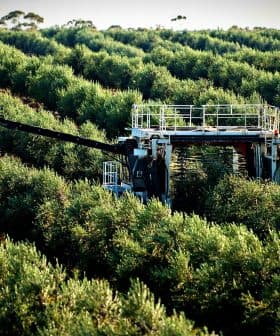U.S. Households Could Slash Emissions by Reducing Junk Food Consumption
A recent study by the American Chemical Society found that consumers in the United States can reduce greenhouse gas emissions significantly by changing their food selection choices, with a vegetarian or vegan diet offering the most reduction. The researchers identified specific sources of households’ food carbon emissions and suggested that cutting out foods with high caloric content and low nutritional value could result in a 29% reduction in total potential emissions, while also potentially improving health outcomes.
Consumers in the United States can significantly reduce greenhouse gases emissions by altering the way in which they make their food selection choices, a new study shows.
While a vegetarian or vegan diet would lower emissions even further, all consumers can play their part without drastic dietary changes, the American Chemical Society found in a study of more than 57,000 households.
Small households are purchasing more food items than larger households, which means they’re probably buying or consuming more than they need.
According to the researchers, previous studies on the curtailing of food-derived emissions from households focused on known specifics, such as meat and dairy products being higher in emissions than fruit, vegetables or grains.
“Based on that knowledge, previous researchers have provided suggestions for changes that individuals or households can make to reduce the emissions generated by food production,” the researchers said. “However, most of these recommendations have been based on an ‘average American diet.’ In reality, not everyone eats the same types or quantities of foods.”
See Also:Proposed Label Would Allow Consumers to Compare Sustainability of Food ItemsKeeping this in mind, the researchers worked to identify the exact sources of households’ food carbon emissions and to compare what would happen if families switched to a sustainable and healthy diet.
According to their findings, “cutting out foods with high caloric content and low nutritional values would result in a 29-percent reduction of the total potential emissions, while also potentially improving health outcomes.”
Those numbers do not include an evaluation of the emissions caused by food packaging and transportation since those data were not included in the original set of U.S. households’ food purchase records used for the study, which were gathered in 2010.
In their current research, the scientists found that 71 percent of the households could improve their carbon footprint. They suggested that small households avoid buying too much food in bulk, which frequently results in more food being thrown away.
They also recommended that producers focus on offering consumers “cost-effective package sizes.”
Hua Cai, an associate professor of environmental engineering at Purdue University and the study’s lead researcher, told Food Dive that “small households are purchasing more food items than larger households, which means they’re probably buying or consuming more than they need.”
“People should buy less savory bakery products and ready-made foods,” she added. “Though those foods are responsible for relatively low carbon emissions, the large amounts of these items that are purchased adds up to significant emissions.”









